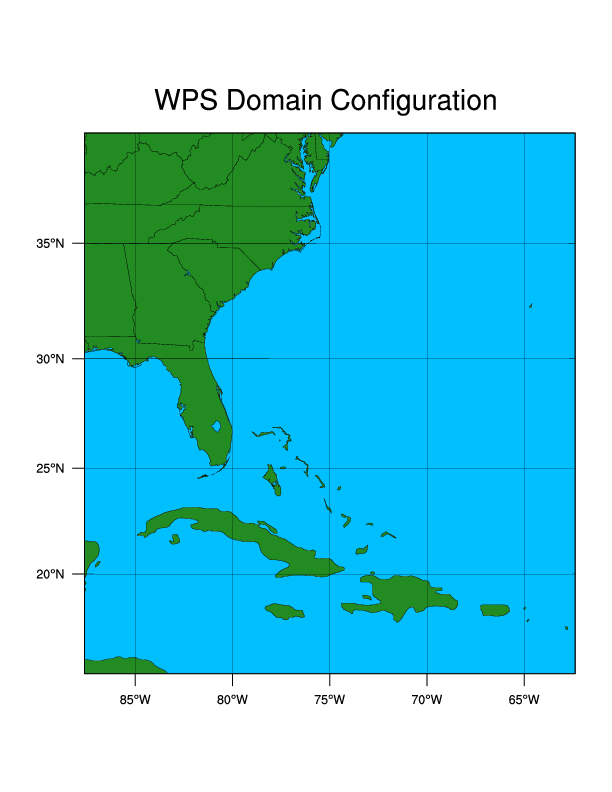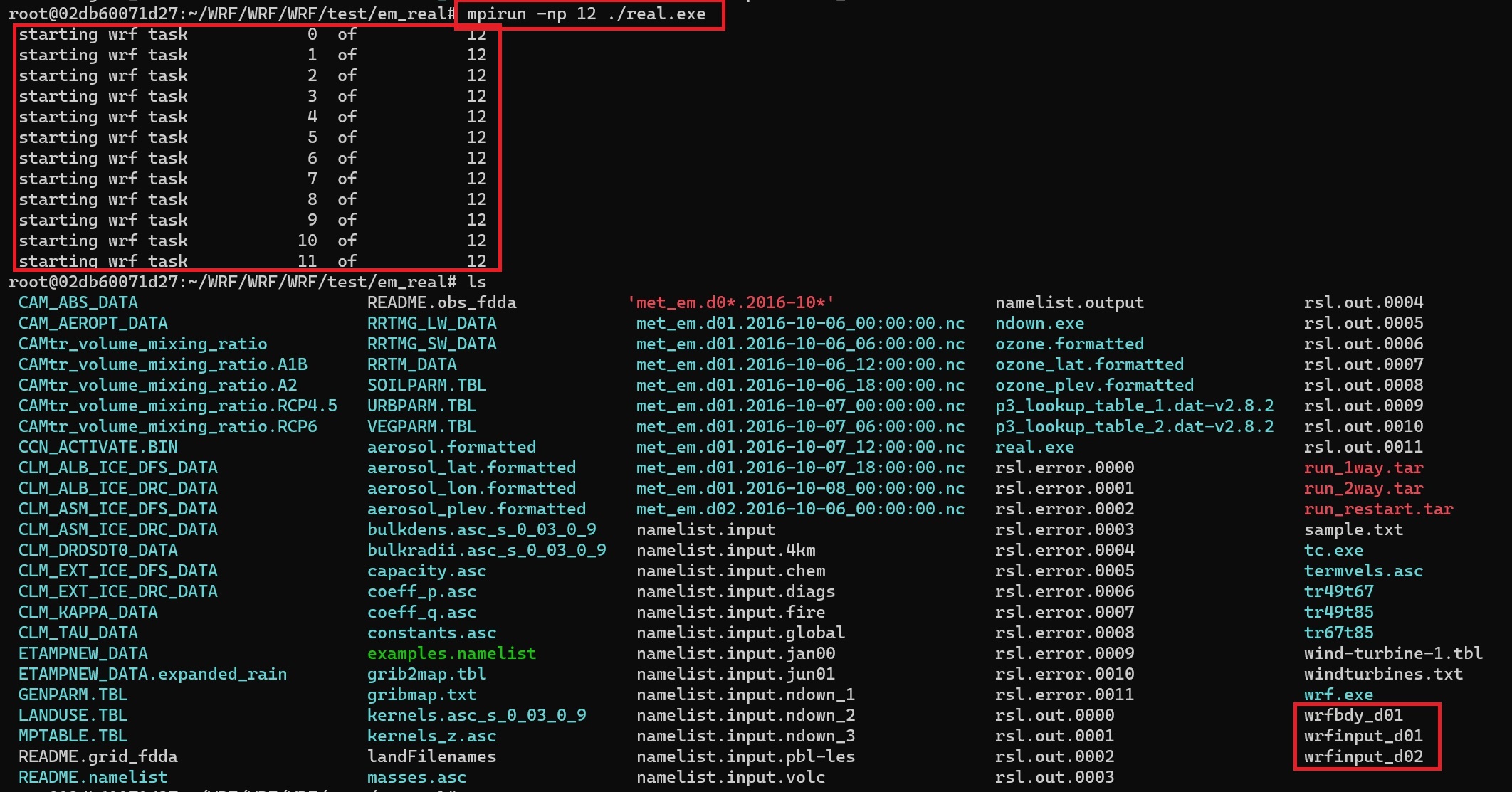运行02
运行02
重新导入WRFdocker开始
操作:01|
官网算例:Nested Model Runs |
Nested Model Runs
A nested domain is used when you wish to have a finer-resolution domain used during a model run. The nested domain covers a portion of the parent domain, and is fully surrounded by the parent domain. It is driven along its lateral boundaries by the parent domain. Using a nest enables running at a higher-resolution without having uniformly high-resolution over a large domain (which can be VERY expensive), and prevents high resolution for a very small domain, with mismatched time and spatial lateral boundary conditions.
For these nested runs we will use the Hurricane Matthew case data (2016-10-06_00 to 2016-10-08_00).
The domain we are going to set up is shown below.
基本流程
WRF使用基本上会涉及到嵌套,因为嵌套可以在局地使用分辨率更高的数据来节约计算资源,同时达到提高局地模拟精度的目的。嵌套主要有两种方式:单向嵌套和双向嵌套。
双向嵌套
双向嵌套是一种在不同网格分辨率下同时运行多个域并相互通信的方法。粗域为嵌套域提供边界值,然后嵌套域将其计算反馈给粗域。(feedback=1)
2.1.1 Two-way nested run, with one input file(双向嵌套,一个输入文件)
本例的预处理步骤类似于单个域设置。当执行多个嵌套域的时候,唯一的区别发生在wrf.exe执行阶段。嵌套的子区域不需要另外准备初始场数据(比如Static Geographic Data和 Grided Meteorological Data),嵌套子区域的静态数据和气象数据都是由粗域插值而成。流程如下所示。
优势:嵌套区域的模拟时间可以晚于粗域。
劣势:嵌套区域的模拟精度可能降低,影响模拟质量。
1、WPS
(1)geogrid
执行./geogrid.exe
mpirun -np 4 ./geogrid.exe
执行成功:
(2)ungrib
连接 GFS Vtable: ln -sf ungrib/Variable_Tables/Vtable.GFS Vtable
通过link_grib.csh脚本来连接GRIB data: ./link_grib.csh ../Data/matthew/fnl
运行ungrib.exe:mpirun -np 4 ./ungrib.exe
(3)metgrid
将输入数据插值到模型域中: mpirun -np 4 ./metgrid.exe
1、WPS
(1)进入em_real
cd ../WRF/test/em_real/
(2)编辑namelist.input
拷贝namelist.input
cp -rf /home/wrf/work/Cases/Matthew/namelist.input ./
(3)连接由metgrid.exe创建的met_em文件
ln -sf ../../../WPS/met_em.d0*.2016-10* .
(4)运行real.exe
mpirun -np 12 ./real.exe
(5)运行wrf.exe
mpirun -np 16 ./wrf.exe








